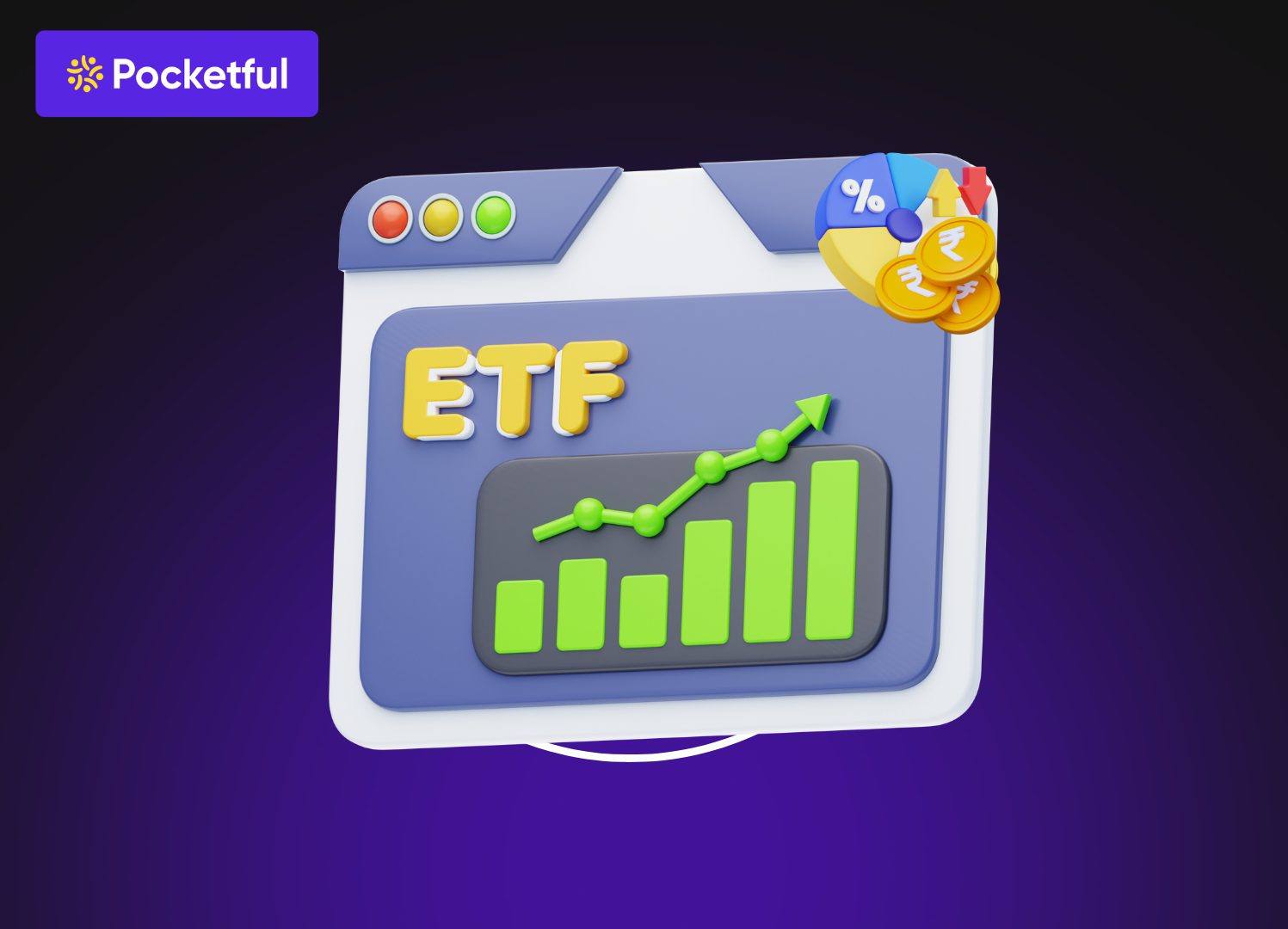Every investor wishes to find that one magic investment that has super high returns with zero risk attached to it. While that isn’t realistic—especially for new investors with limited knowledge, the good news is that there are many safe investment options in India that offer good, steady returns. Finding the best way to invest money is all about understanding these options and picking the ones that are right for you. The following are the safe investments with high returns in India that can form the bedrock of your financial plan for 2025 like Government-Backed Schemes, Public Provident Fund, Sukanya Samriddhi Yojana, etc.
But what makes these investments safe? It usually comes down to two things, first, it might have a government guarantee, meaning the Government of India itself promises to protect your money. The government provides investors the highest level of safety. Second, top graded ratings like ‘AAA’, from certified agencies that check the financial health and fundamentals of companies makes them reliable for investors and gives investors a sense of security.
Let’s explore some of these safe investment options available in India for your money.
Government-Backed Schemes
The safest of all investments are those backed by a “sovereign guarantee”, meaning there is a formal promise from the Government of India to the investors that their money is in safe hands.
1. Public Provident Fund (PPF)
It is a long-term savings plan offered by the government to investors. Its main goal is to help you build wealth over many years, making it perfect for your long term goals like retirement or your children’s future.
Basically it is a 15 year investment cum savings scheme where you deposit money every year and earn guaranteed interest on your investments. The current interest rate is 7.1% per year, and this interest gets compounded annually. Here the investors not only earn interest on the invested money but also on the interest that you’ve already earned. But you need to know that there is a lock-in period of 15 years in PPF. After this, investors can either withdraw all the money from this fund or extend it by blocking it for 5 more years.The minimum amount that you can invest starts from Rs.500 and can be maximum up to Rs.1.5 lakh in a financial year. It is backed by a sovereign guarantee from the Government of India, making it one of the most secure long-term investments in the market.
PPF also has EEE, which stands for Exempt-Exempt-Exempt giving investors a huge benefit meaning the money you invest is exempted from income tax and is tax-deductible under Section 80C, the interest you earn is completely tax-free, and the final amount you receive at maturity is also tax-free.
2. Sukanya Samriddhi Yojana (SSY)
Sukanya Samriddhi Yojana is a special government scheme for Indian parents launched to save money for their daughter’s education and marriage. It is one of the most high interest paying small savings schemes for investors with an interest rate of 8.2% per year, compounded annually. Parents and guardians whose child is younger than 10 years can invest in this scheme. This account matures after 21 years from the date of opening the account, or when the girl gets married after turning 18 years of age. An investment of minimum of Rs.250 and a maximum of Rs.1.5 lakh can be invested in a financial year. It is also a government-backed scheme with a sovereign guarantee.
SSY also has EEE superpower meaning the investment is tax-deductible, the interest is tax-free, and the maturity amount is also tax-free, making it a powerful tool for parents’ financial security.
3. National Savings Certificate (NSC)
The National Savings Certificate is an easy and simple to invest scheme that is directly accessible to investors from their nearest post office. It is best suitable for investors who can lock their money for a minimum of 5 years , though it is a one time investment with a fixed tenure of 5 years. Investors can get an interest rate of 7.7% per annum on their investments. Also the interest is compounded annually but paid to the investor after 5 year tenure. Investment can start from Rs.1,000 and can go up to the investors choice. It also gives the investors security as it is backed by the Government of India.
In NSC, you do get tax benefits not only from the invested amount but also on the reinvested amount, as in the initial four years your interest earned gets automatically reinvested and it also qualifies for tax deduction under 80C as per Income Tax Act. The amount you invest is eligible for a tax deduction under Section 80C helping investors in saving more tax.
4. Post Office Monthly Income Scheme (POMIS)
This scheme is best suitable for people who need a fixed return on their investment every month, like retirees or anyone who wants a steady side income. In this scheme you invest a lump sum amount, and the post office pays you interest every month on that amount. It is a fixed 5 year investment scheme that gives you a regular monthly payout. The current rate is 7.4% per year, which is paid to you on a monthly basis. Investors can put up to Rs.9 lakh in a single account or up to Rs.15 lakh in a joint account (up to three adults). This scheme is also a safe investment option for investors as it is backed by the Government.
Unlike PPF and SSY, the monthly interest you receive from this scheme is fully taxable and gets added to your annual income. Also, the initial investment does not give you any deduction under Section 80C.
5. Senior Citizen Savings Scheme (SCSS)
The Scheme is specially designed for senior citizens that are aged 60 and above. It focuses on providing a steady and reliable source of income to elderly after retirement alongwith the highest rate of interest of 8.2% per annum, paid every quarter on your investment. The scheme has a tenure of 5 years, which can be extended for another 3 years. You can invest an amount up to Rs.30 lakh in this scheme. It is fully backed by the Government of India, making it one of the most trusted schemes for retirees to invest their life savings.
In this scheme the initial amount is eligible for tax deduction upto Rs.1.5 Lakhs under section 80C but the interest earned is taxable as it gets added to your income.
Read Also: 10+ Best Investment Plan for Monthly Income in India
Safe Investment Bonds
Now, let’s look at some extremely safe investment options but work a little differently from the simple deposit schemes. They are also backed by the government but have some unique features you should know about.
1. RBI Floating Rate Savings Bonds
The Reserve Bank of India issues a special kind of bond for the investors where the interest rate is not fixed rather it is floating in nature, which means it can change every six months depending on the rates in the economy, they have a variable interest rate. The current interest rate is 8.05% for the period from July to December 2025. This rate is linked to the National Savings Certificate (NSC) rate and is always set 0.35% higher. So, if the NSC rate goes up, your bond’s interest rate will also go up after the next six month review.
But note these bonds have a lock-in period of ranging from 4 to 7 years. Investors can start with just investing Rs.1,000 and there is no upper limit to it, one can invest as per their purchasing capacity. This is a big advantage for those who want to invest a large sum safely. As they are issued directly by the RBI and backed by the Government making them a safe investment with high returns.
2. Tax-Free PSU Bonds
These bonds are issued by large, government-owned companies, also known as Public Sector Undertakings (PSUs). Their biggest benefit an investor gets is a completely tax-free income.
Though the Indian Government has stopped issuing new tax-free bonds since 2016, investors can still buy them from the secondary markets. They are sold in the secondary market but they still have a high demand as they are tax free, though the price you get is higher than their original face value, also known as premium.
When you buy these bonds at premium the real return which is known as Yield to Maturity will be lower than the interest rate of the bond. For example, if a bond gives an interest rate of 8% as its original interest then it might give you an actual return of around 5.5% due to buying it on premium.
These bonds are issued by strong government companies like NHAI and IRFC and they generally have the highest credit rating of ‘AAA’, which means the risk of the company failing to pay you back is very low.
Newer Safe Investment Options
Now let’s look at some modern investment options. They are not backed by the government but still they have strong finances and fundamentals. These options open up more choices for the investors to invest safely..
1. AAA-Rated Bank & Corporate Fixed Deposits
Everyone is aware about the Fixed Deposit or FD. It is one of the safe investments for millions of Indians. You can get these FD’s from a bank or even from a company (which is known as Corporate FD). But not all FDs are not equally safe, one should always look for the ‘AAA’ rating.
As AAA ratings are done by credit rating agencies like CRISIL and ICRA, they act as financial health inspectors of these companies. They generally look at how strong a bank or company is, ‘AAA’ rating is considered as the highest grade. It means these institutions have a high safety and low credit risk. In simple words, they are very likely to pay your money back on time.
As of September 2025, rates can range from 5.85% to over 8.20% p.a. Large, trusted banks like SBI (which has an AAA rating for their FDs) and HDFC Bank offer great safety but moderate rates of around 6.40% per annum. Some highly-rated companies like Bajaj Finance might offer investors a higher rate, up to 6.95% per year.
These are safer market investment options as Bank FD’s upto Rs. 5,00,000 per depositor are insured by the RBI’s subsidiary DICGC and corporate FD’s get their safety from AAA rating portraying their strong fundamentals.
2. Target Maturity Funds (TMFs)
Imagine an investment that behaves like an FD but is actually a mutual fund. This is known as Target Maturity Fund, it gives you the predictability of an FD but the flexibility of a mutual fund.
These are special debt mutual funds that invest in a pool of high quality and low risk bonds from government and top PSUs with a fixed end date, just like an FD. TMFs are “passively managed” by a fund manager who buys a portfolio of high-quality bonds that mature around the same time as the fund’s target date, holding them till maturity is the main job for these investors.
They invest only in very high-quality debt like Government Securities (G-Secs), State Development Loans (SDLs), and PSU bonds. This makes the risk of default very low. Also, because they hold the bonds till maturity, the daily ups and downs of interest rates don’t affect you much if you stay invested till the end.
3. Low Duration Debt Mutual Funds
Low duration funds are designed in such a way where you can put your money for a short period and earn a better return as compared to a savings account.
Low Duration Debt Mutual Funds are investment instruments with a very short maturity period, usually between 6 and 12 months. They lend money for short durations to companies and the government by buying their short-term bonds and papers. Because the lending period is so short, they are not very sensitive to changes in interest rates. They are considered relatively safe because of the short-term nature of their investments and their focus on high-quality borrowers such as companies and government. However their value can go up or down slightly, and they are not capital-guaranteed like an FD.
Read Also: Best Places To Park Your Short Term Money
Comparing Your Safe Investment Options
| Investment options | Interest/Yield (%) | Tenure/Maturity | Max Investment | Tax on Returns | Liquidity | Safety Level |
|---|---|---|---|---|---|---|
| PPF | 7.1% | 15 Years | ₹1.5 Lakh/Year | Tax-Free | Low | Sovereign Guarantee |
| SSY | 8.2% | 21 Years | ₹1.5 Lakh/Year | Tax-Free | Low | Sovereign Guarantee |
| NSC | 7.7% | 5 Years | No Limit | Taxable | Low | Sovereign Guarantee |
| POMIS | 7.4% | 5 Years | ₹15 Lakh (Joint) | Taxable | Medium | Sovereign Guarantee |
| SCSS | 8.2% | 5 Years | ₹30 Lakh | Taxable | Medium | Sovereign Guarantee |
| RBI Floating Rate Bonds | 8.05% (Floats) | 7 Years | No Limit | Taxable | Low | Sovereign Guarantee |
| Tax-Free PSU Bonds | 5.5% (YTM) | 10-20 Years | No Limit | Tax-Free | Medium | AAA-Rated (PSU) |
| AAA-Rated FDs | 5.85%- 8.20% | 7 Days – 10 Yrs | Varies | Taxable | Medium-High | DICGC / AAA-Rated |
| Target Maturity Funds | 7.0% – 7.5% (YTM) | Varies (3-10 Yrs) | No Limit | Taxable | High | High-Quality Debt |
| Low Duration Funds | 6.0% – 7.0% | 6-12 Months | No Limit | Taxable | High | High-Quality Debt |
How to maximize your returns
Even within safe investments, you can use some smart tricks to earn a little extra.
- Diversify your funds : Instead of putting all at one place like a large sum Rs.5 lakh in a single 5-year FD, can give you a fixed return, smart investors like you can divide this investment into five different FDs of Rs.1 lakh each, with tenures of 1 year, 2 years, 3 years, 4 years, and 5 years. This way, one FD matures every year. This gives you regular access to cash and allows you to reinvest the money at potentially higher interest rates if they have gone up.
- Compounding factors : Compounding is when you earn interest on the interest you receive. It’s like your money starts earning its own salary, options like PPF, SSY, NSC, and cumulative FDs do this automatically. Over the long term, this can make a huge difference to once final returns.
- Tax Benefits : The government allows you to reduce your taxable income by up to Rs.1.5 lakh under Section 80C. Make sure you use this limit by investing in eligible options like PPF, SSY, NSC, and 5-year tax-saver FDs. Saving tax is like earning more returns.
Conclusion
You should know there is no single best safe investment option available in the market. The best investment plan is the one that is built for your life, according to your goals, and your comfortable investment level. The journey to financial freedom is not a race, it’s about building a strong and sturdy financial house, brick by brick.
The options discussed in this blog are the foundational bricks. By understanding them and looking at all the different options, you can create a diversified portfolio according to your own needs. This portfolio will not only protect your hard earned money but also help you to grow it steadily, giving you peace of mind for your future.
| S.NO. | Check Out These Interesting Posts You Might Enjoy! |
|---|---|
| 1 | Best SIP Apps in India for Investment |
| 2 | Top 10 Reasons to Invest in Gold |
| 3 | Types of Investment in the Stock Market |
| 4 | How to Invest in ETFs in India – A Beginner’s Guide |
| 5 | Benefits of Investing in Bonds |
Frequently Asked Questions (FAQs)
What is the safest investment option in India that also gives high returns?
For senior citizens schemes Senior Citizen Savings Scheme (SCSS) offers a high 8.2% interest with government backing. For parents of a girl child, the Sukanya Samriddhi Yojana (SSY) is best suitable as it gives 8.2% in return. For a general investor, the Public Provident Fund (PPF) provides a good balance with 7.1% tax free returns and high safety, but it has a long lock-in period.
Can good returns be made from a risk free investment?
Investments are not 100% risk-free, however, schemes backed by a government sovereign guarantee, like PPF, NSC, and RBI Bonds, are considered the closest you can get to zero risk investments.
How can investments be protected from inflation?
Investors should look at the “real rate of return,” which is the interest rate minus the inflation rate. If your FD gives 7% and inflation is 6%, your money’s real growth is only 1%. To beat inflation, you can choose schemes with higher interest rates like SCSS (8.2%) or create a mix of safe investments with some that have the potential to deliver higher.
Which investment option is easiest and best to start with?
For beginners a Public Provident Fund (PPF) account is an easy to start option with a simple way to start saving for the long term with tax benefits. For short-term goals 1-3 years, a simple Fixed Deposit from a large, trusted bank like SBI or HDFC Bank can also be opted.
Can I put all my savings into one safe investment?
No, smart investors never put all their money in one place, you should look for diversifying your funds in multiple investments. For example, some money in PPF for long-term goals, some in FDs for medium-term needs, and some in a Low Duration Fund for emergencies, this reduces your overall risk.













